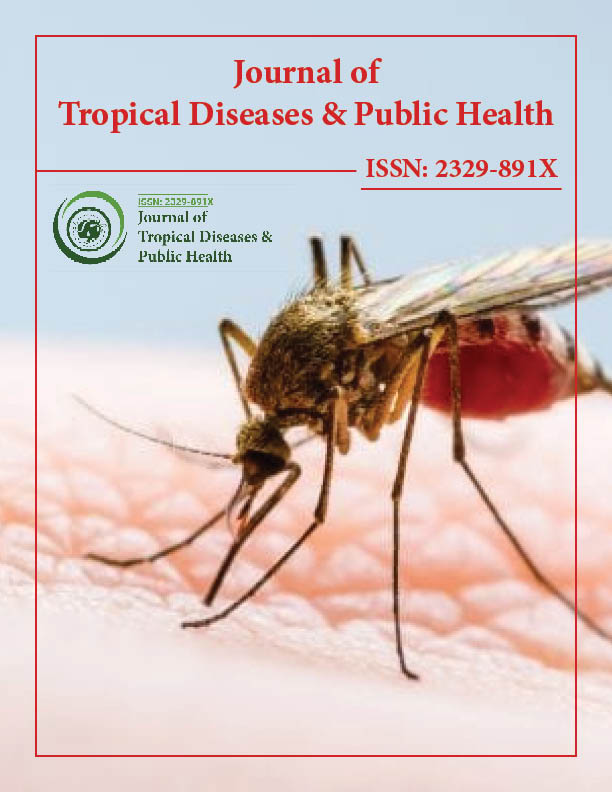Indexed In
- Open J Gate
- Academic Keys
- ResearchBible
- China National Knowledge Infrastructure (CNKI)
- Centre for Agriculture and Biosciences International (CABI)
- RefSeek
- Hamdard University
- EBSCO A-Z
- OCLC- WorldCat
- CABI full text
- Publons
- Geneva Foundation for Medical Education and Research
- Google Scholar
Useful Links
Share This Page
Journal Flyer

Open Access Journals
- Agri and Aquaculture
- Biochemistry
- Bioinformatics & Systems Biology
- Business & Management
- Chemistry
- Clinical Sciences
- Engineering
- Food & Nutrition
- General Science
- Genetics & Molecular Biology
- Immunology & Microbiology
- Medical Sciences
- Neuroscience & Psychology
- Nursing & Health Care
- Pharmaceutical Sciences
Perspective - (2025) Volume 13, Issue 1
Evaluating the Long Term Impact of Endemic Diseases on Health Systems and Communities
Bernal Ning*Received: 24-Feb-2025, Manuscript No. JTD-25-29262; Editor assigned: 26-Feb-2025, Pre QC No. JTD-25-29262; Reviewed: 12-Mar-2025, QC No. JTD-25-29262; Revised: 19-Mar-2025, Manuscript No. JTD-25-29262; Published: 26-Mar-2025, DOI: 10.35241/2329-891X.25.13.464
Description
Endemic diseases are illnesses that are consistently present within a specific geographic area or population over a prolonged period. Unlike epidemic or pandemic diseases, which occur as sudden outbreaks or global spread, endemic diseases maintain a steady prevalence and transmission rate. Their persistence reflects a balance between the pathogen, the host population, and the environmental or social conditions that support continuous transmission. Endemic diseases may have varying levels of severity and can range from mild, manageable conditions to severe illnesses with significant health impacts.
Schistosomiasis also known as bilharzia is a parasitic disease endemic to parts of Africa, South America and Asia. It is transmitted when people come into contact with freshwater contaminated by infected snails. The parasite penetrates the skin and matures in the human body, affecting organs such as the bladder, intestines, and liver. The disease causes chronic illness, especially among children, and contributes to poor growth and cognitive development. Regular mass drug administration and improved sanitation are key strategies for control.
Chagas disease caused by parasite and transmitted by triatomine insects often called kissing bugs is endemic in parts of Latin America. It can cause acute symptoms but often leads to a chronic phase with serious complications, including heart disease and digestive problems. Although vector control has reduced transmission in many areas, Chagas disease remains a significant health concern in rural and underserved communities.
Dengue fever is endemic in many tropical and subtropical countries, where Aedes mosquitoes thrive. The disease is caused by four related viruses, and infection with one serotype provides immunity only to that type, not the others. Dengue is characterized by high fever, severe headache, muscle and joint pain, and in severe cases, hemorrhagic fever and shock. Its endemic nature is often associated with urbanization, inadequate sanitation, and lack of effective mosquito control.
The persistence of endemic diseases is influenced by a range of factors. Environmental conditions, such as climate and geography, can sustain vectors or reservoirs of infection. Socioeconomic factors, including poverty, limited access to healthcare, and poor sanitation, contribute to ongoing transmission. Cultural practices, population movement, and health system capacity also play important roles in shaping disease dynamics.
Managing endemic diseases requires sustained public health efforts. Unlike outbreaks that call for emergency responses, endemic diseases demand long-term strategies. These include routine immunization, health education, vector control, access to diagnostics and treatment, and surveillance systems to monitor disease trends. Interventions must be handmade to local contexts, taking into account the specific challenges and resources available in each region.
Conclusion
Endemic diseases are a constant public health burden in many parts of the world, particularly in low- and middle-income countries. Their ongoing presence highlights the need for continuous investment in healthcare infrastructure, community-based interventions, and research. While some endemic diseases can be eliminated or controlled through coordinated efforts, others require adaptive strategies to manage their impact and prevent escalation into larger public health crises. Addressing the root causes of endemicity such as poverty, inadequate healthcare, and environmental factors is crucial for improving health outcomes and achieving long-term disease control.
Citation: Ning B (2025). Evaluating the Long Term Impact of Endemic Diseases on Health Systems and Communities. J Trop Dis. 13:464.
Copyright: © 2025 Ning B. This is an open-access article distributed under the terms of the Creative Commons Attribution License, which permits unrestricted use, distribution and reproduction in any medium, provided the original author and source are credited.

